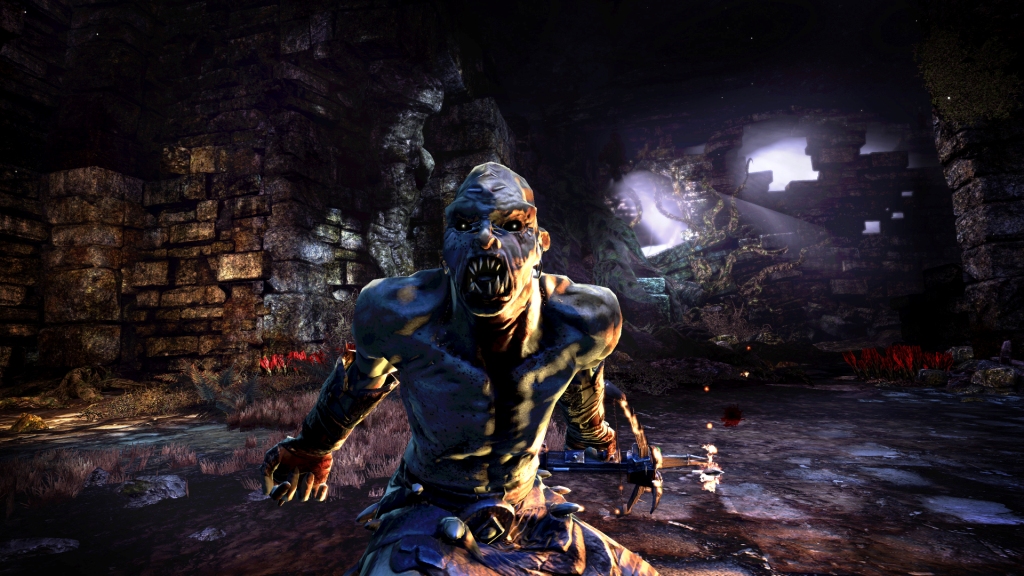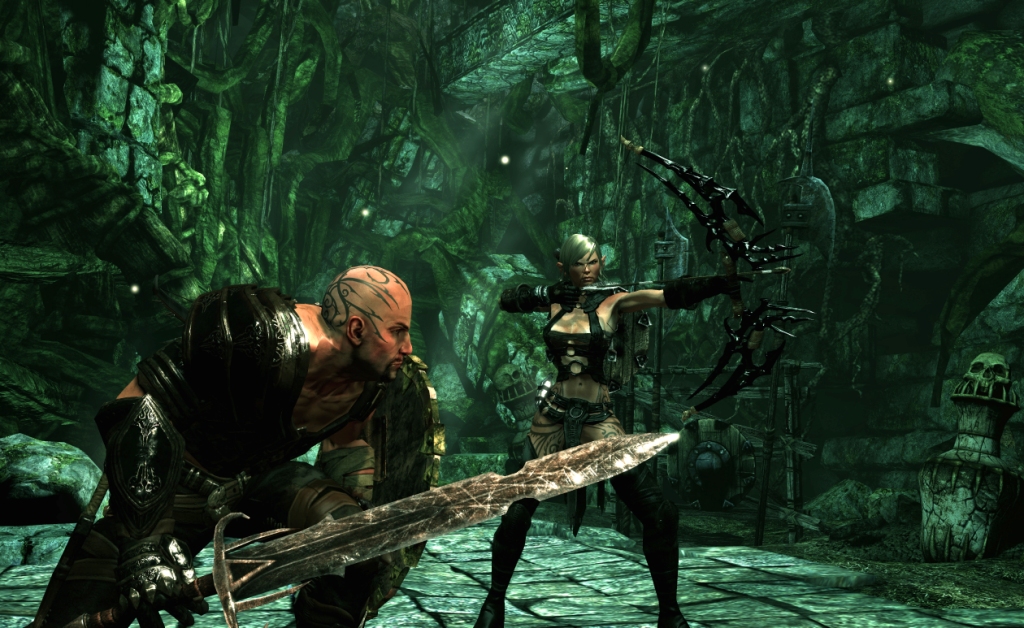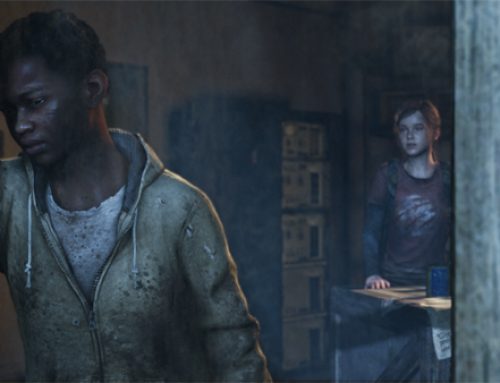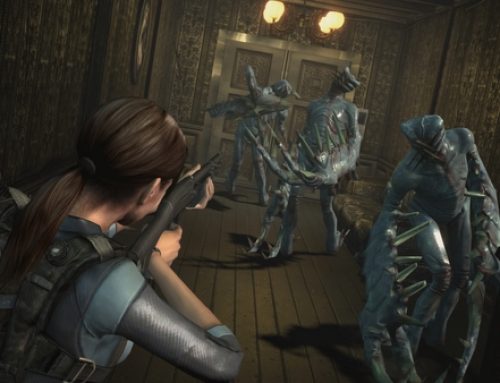At last week’s Game Developers Conference in San Francisco, Bethesda Softworks announced and showed off the newest third-party title it will be publishing, inXile Entertainment’s “Hunted: The Demon’s Forge.” The game, which was shown in a pre-alpha build, will be released on the PC, Xbox 360 and PlayStation 3. No release date has been set.

“Hunted,” which comes from the same folks who created “The Bard’s Tale,” is a two-player, online-only cooperative dungeon crawler built using Epic’s Unreal Engine 3. Of all the games I’ve seen that have used the popular middleware, “Hunted” looks the closest to Epic’s signature games, “Gears of War” and “Gears of War 2.” Whether that’s because the game is currently in a pre-alpha state and has no set release date remains to be seen, but for now, I’m thinking of it as “Gears of Warcraft.”
Before the game’s director, Michael “Maxx” Kaufman, and inXile President Matthew Findley played the game for us journalists, we heard about how “Hunted,” which has been developed quietly over the past few years, takes its cues from classic dungeon crawl role-playing games like the “Wizardry,” “Ultima” and “Might & Magic” series.
“Hunted” is designed from the bottom up as a two-player game, featuring the exploits of E’lara, a scantily clad elven babe who wears revealing armor and specializes in ranged combat, and Caddoc, a musclebound shirtless dude who excels at bashing things. Though these descriptions follow common medieval fantasy archetypes, we skeptics were assured that E’lara and Caddoc’s personalities didn’t always follow type. E’lara, for example, is the bloodthirsty one, always wanting to charge into a fight while Caddoc favors discretion. Also, in addition to their primary combat abilities, both characters are equally capable users of magic.

In the demo, we saw E’lara and Caddoc arrive in a largely deserted town, where the residents had all been hauled off by the Wargar, an example of which appears above. From there, we watched the inXile chaps venture into a dungeon in search of the townspeople, fighting off baddies along the way.
The game’s blend of melee attacks, ranged weaponry and magic reminded me a lot of “Fable II” in its apparent simplicity and ease of use. But because this is a two-character game — even when you play alone, the computer will control your companion — the game mixes it up by letting players charge up their companion’s attacks with magic. At one point in the demo, we saw a boss who could only be defeated through careful teamwork using these charged combos. It’s also worth mentioning that the killing blow was struck via a “God of War”-style quick-time event. Timed button presses sealed the deal.
“Hunted’s” primary leveling mechanism is not based on how many enemies you kill, but on the collection of crystals you’ll find throughout the game world. The crystals are single-instance finds, meaning that once you pick one up, it won’t be there again on subsequent playthroughs. Once you find all the crystals, your character can’t be leveled up any more no matter how many hours you sink in to “Hunted.”
When playing co-op, which is online only, you’ll either bring in your own character or use your co-op buddy’s unused adventurer, depending on what the match’s host chooses. In any case, any crystals you find while playing your friend’s character are transferrable back to your own and vice versa. If you bring your own E’lara in to play alongside your friend’s Caddoc, your friend’s unused E’lara character will reap the benefits of your work. In an interesting twist, “Hunted” is the first co-op game I’m aware of that will allow its players to swap characters at specific checkpoints. In other words, if you get tired of playing E’lara at a certain point, you can ask whoever’s controlling Caddoc if they want to switch.

For all inXile’s talk about “Hunted: The Demon’s Forge” owing a lot to classic role-playing games, once I saw the game in action, I couldn’t help but think the game was simply “Gears of War” in a medieval fantasy setting.
Let’s count the similarities:
-Both games use Epic’s Unreal Engine 3. That’s no big thing in its own right. Tons of games, from “Batman: Arkham Asylum” to “Borderlands” and the “BioShock” games use the middleware. And that’s just the B’s.
-When players in “Hunted” take damage, the screen becomes splattered and darkened, similar to the “Gears of War” games’ spatters of blood.
-As in most first-person shooters, “Hunted’s” characters regenerate health by staying out of fire for a few seconds, after which their status gradually improves. That’s a pretty big contrast to most action RPGs’ use of hit points, healing spells and potions.
-When characters’ health is exhausted, they don’t “die.” Rather, they “bleed out,” remaining on the ground for a period of time during which their squadmate can revive them. During this bleed-out time, it’s possible to crawl, very slowly, toward your teammate. (In a switch from “Gears,” you’ll be able to revive your teammate from afar, by throwing a breakable potion-filled vial within their general vicinity.)
-When you play as E’lara, you’ll be doing a lot of shooting from cover, to take advantage of her knack for using ranged weapons. Even though you’re using a bow and arrow instead of an assault rifle with a chain-saw bayonet, the stop-and-pop feel of some of these stretches looks like classic “Gears of War.”
-With the exception of a “Fable II”-esque town at the beginning of the game, “Hunted’s” color palette, lighting and overall aesthetic bear the mark of “Gears of War” more than any other Unreal Engine game I’ve seen. Even the hard rock playing during the battle scenes seemed more shooter than fantasy action game.
Bear in mind that I don’t think any of these similarities poses a problem. The “Gears of War” games are a pretty high bar to shoot for, and, from what I saw of this early build, “Hunted” might succeed in appealing both to fans of classic dungeon-crawls and more action-oriented games like the “Gears” franchise or “Borderlands.” If Bethesda and inXile want to market this game properly, they might as well embrace the “Gears of Warcraft” tag, playing up its similarities to Epic’s shooters and Lionhead’s “Fable II,” two popular franchises with massive fan bases.



